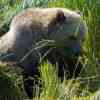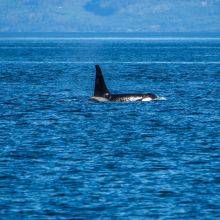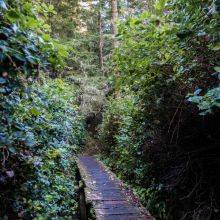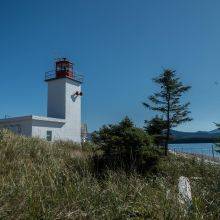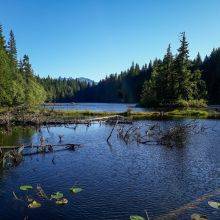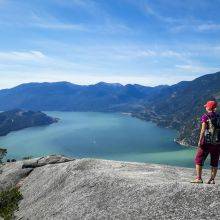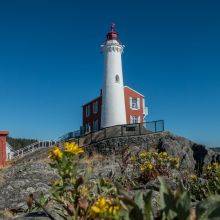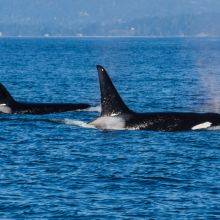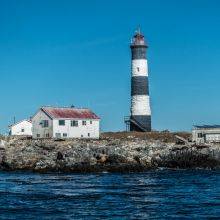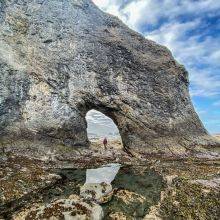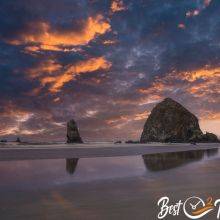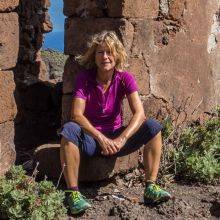When Is the Best Time
Watching Grizzly Bears in their natural environment was always on our bucket list. Usually, the best spots are too far away, and high priced lodges are the only option. There is one exception; Knights Inlet in British Colombia in easy reach from Vancouver Island, which can be visited on a long day trip. These guided boat tours are already fully booked for many months in advance.
We spent two weeks on Vancouver Island. I checked out the available dates just one month in advance, and there were only two days left to get a seat. When we arrived in Vancouver, we had to leave the next day to get to Telegraph Cove. It was quite a drive but definitely worth the effort. Such an incredible tour to watch grizz, black bears, and even a massive orca all in one day.
Bear Watching Season
The bear watching season starts in mid-April; black and grizzly bears begin emerging from hibernation and head to Glendale Cove to feed on the succulent new spring growth. Glendale Cove is home to one of the largest concentrations of grizzly (brown) bears in British Columbia. Tours for Grizzlies start mid-May until the end of September. The best time to spot grizzly bears in their natural environment is the summer season, from June-September. In June, the berries are not yet ripe, and the bears seek other food close to the water.
They will collect eels, crabs, and isopods at the beach by rolling rocks. August and September are awesome to spot them hunting salmon. The grizzlies depend on the annual salmon run. The salmon migrates to the rivers upstream where they were once born.
Bear Spotting
Peak Season
Although August and September are usually the months to see Grizzlies hunt for salmon, it is unpredictable. The salmon run, when the salmon migrates upstream the rivers and inlets to spawn, usually starts after heavy rainfalls. There is luck needed to choose the right time for your trip. Planning a trip in the peak season requires pre-booking due to limited availability.
During our visit in early September, not much salmon had been seen compared to last year's early run in July. Peak season and tours should be booked in advance from mid-August to mid-September. It's a spectacle when the bears hunt the salmon. However, we watched them when they fed on high protein grass, seaweed, and mussels, and it was a unique experience.
Grizzlies are hungry in the morning and come out of the higher vegetation to the shoreline. Therefore, the trip starts before 7:00 am because Telegraph Cove's travel time to Knight Inlet is about 2 hours. The stating time also has to be synchronized with the tides.
Weather
The climate at Telegraph Cove and in the Johnstone Strait during summer is characterized by cool mornings with a light breeze and frequent fog. As the day progresses, the fog lifts, sometimes slowly and providing spectacular views of the area. In the late afternoon, winds can freshen up but drop for early evening to yield marvellous sunsets. Summer storms with rain are not common, but they can occur when the wind changes to the South East. Usually, the wind blows from the northwest. From July to August, the precipitation is low compared to October until January. However, even during the driest time, you may experience days of rainfall.
Which Camera Do I Use?
Most of my shots were taken with my Olympus OM-D EM 10 Mirrorless Micro-Four-Thirds camera. I love it so much because it’s not too big for my hands and I can carry it easily everywhere. The wonderful EVF is extremely bright and works perfect outdoors. I never go without my camera.
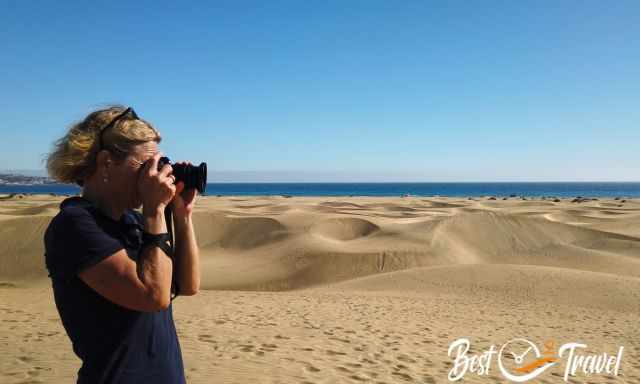
I use a Mark II and Mark III but my next one will be the OM-D E-M5 because the body is splashproof, dustproof, and freezeproof and provides a better image stabilization. Especially during rain, in the rain forest or close to a waterfall it is sometimes impossible to use the camera. During our road Trip through Utah and Arizona I had issues with the strong wind and the sand. I had to cleaning my camera daily.
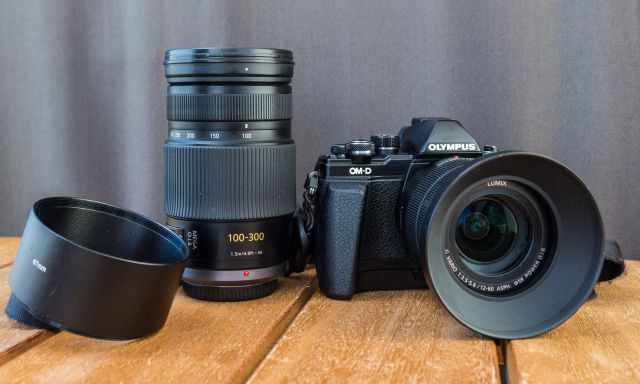
My day-to-day lens is a Panasonic Lumix G Vario 12-60 mm. The Micro-Four-Thirds Sensor makes it easy to use Panasonic Lumix G Vario 100-300 mm which is equal to a 200-600mm lens for an APS-C Camera for shooting long range.
Best Months to Visit
Location and Tips

This day trip is an affordable alternative in comparison to the popular Knights Inlet Lodge. The tour usually starts at 6:45 am, but sometimes one of the boats needs to pick up other guests from other locations before. As usual, this morning was foggy at Telegraph Cove.
Our skipper was very experienced and navigated the boat for 2 hours only via GPS and echo lot. Unfortunately, we couldn't see anything outside, but Matt, our tour guide, used the time to explain more details about the tour and the Grizzlies. These knowledgeable guides do an awesome job to get out the best possible. For breakfast, coffee, tea, fruits, yoghurts, and muffins were served. Although the boat is not very big, it even has a washroom/toilet.
After travelling for around 2 hours, the boat will reach Glendale Cove. Here you will change the boat from an aluminium water taxi to a custom-made viewing skiff. These large flat bottom viewing skiffs are former herring fishing boats modified for wildlife viewing in shallow estuaries.
The skipper will use first the outboard engine to reach the shallow water; then, the boat will be pushed and pulled by the guide and the skipper by walking through the water close to the shoreline. This gives an excellent view of the Grizzlies grazing high protein food. However, they respect the rules of not getting too close and disturbing the bears.
You can observe the grizzlies for hours feeding and wandering around. The guides let everybody to the top of the skiff if wanted. The view from here is even better.
I spotted a standing grizz in the grass from the top. The skipper and guides change the position whenever needed for excellent views and shots of the bears.
5 Packing List and Must-Know Tips
- You don't need many warm clothes for the water taxi as you can sit inside and it even has a heater. But if you like to enjoy the whole surroundings, you should stay outside on the back of the boat. This requires warm and windproof jackets as it becomes very windy and cold even if it's sunny. You definitely need some extra layers for the skiff, especially if you stand up on the top.
- Wearing not too prominent colours is recommended. My pink down vest was for the boat ride only.
- Additionally, don’t use any perfumes or aftershave in the morning, the bears have an extreme sense of smell, and they shouldn't get in contact with any non-natural or human odour.
- It is not allowed to take any food to the skiff for the same reason.
- With a good zoom camera, you get excellent shots of the bears. Binoculars are provided on the boat to spot the bears from a distance of the required 50 meters.
I took all these pictures with my camera: Olympus OM-D10 and zoom lens of 100-300 mm (micro four thirds). I have the copyright! If you want to use any of my pictures, contact me.
9 Facts About Grizzlies in British Columbia
- Grizzlies living on the coast are typically larger and heavier than the Grizzlies living inland due to the high protein of the available food from the coast and sea.
- A coastal male's average weight can reach up to 800 lbs compared to inland bears with 400-790 lbs.
- In September 2017, the Salmon had not arrived in Glendale Cove. Although the bears find other sources to fill up their weight for hibernation, it can have severe consequences. We spotted one female bear with two one-year-old cubs. The cubs are fed entirely on their mother's milk during hibernation. Therefore, she needs to gain enough weight to survive and allow her cups to experience the next summer. Our crew feared that she and the cubs might not survive this winter due to the missing or late salmon.
- On average, half of the one-year-old cubs will not survive the winter, impacting the bear population.
- Female bears will not reproduce for three or more years if the young die or get killed.
- Lifespan in the wild is roughly 30 years.
- They gain 30-40% of their weight by fall for hibernation.
- Hibernation from early November to mid-April.
- Estimated population of 14-16.000 grizzly bears in British Columbia.
Top Tip
For excellent pictures, bring a camera with at least 300 mm or equivalent telephoto lens as Provincial Wildlife Branch Bear Viewing Guidelines require that the boat stays from the bears 50 meters away.
















